How can you get 100 million people translating everything into different languages efficiently for free?
Step 1: Internet
Step 2: Duolingo
Step 3: Go to Step 2 and repeat forever
It’s unique, but that’s not all as to why it’s a hit. It’s free, but that’s not all as to why it’s booming right now. It’s available in a lot of interfaces, but that’s definitely not all as to why it’s attracting people like voodoo.
The main reason behind the success of Duolingo – it’s ingenious. Its rationale, concept, working and approach are impressive. In 2005, the then Carnegie-Mellon University PhD student, Luis von Ahn, had an idea for a fantastic game. Famed as one of the pioneers of crowd sourcing, Luis von Ahn tried to combine the computational prowess of human beings with better image searching.
Result: ESP Game; acquisition by Google; later renamed to Google Image Labeler.
In 2007, Luis von Ahn had another epiphany. He realised that people spend a lot of time typing in CAPTCHAs online and hence, decided to transform it into something bigger. (Just a heads up, Luis von Ahn was one of the founders of CAPTCHA as well. For those who don’t know, CAPTCHAs are the fuzzy, twisted words that you’re required to type in on a lot of online platforms these days to distinguish yourself from computers and prevent spamming.) He felt that the time people spent entering CAPTCHAs online did serve the purpose of preventing spamming; but the use wasn’t enough. So, it was put to use in digitising text books.
Result: reCAPTCHA, big brother of CAPTCHA; followed by its acquisition by Google, yet again.
And now the genius is back.
Enter Duolingo - his latest, marvellous, crowd sourcing, gem of an online startup.
Duolingo is a free language-learning website; for the people and by the people.
Here, it’s hard to stress upon the gravity of the phrase ‘by the people’. Duolingo is designed in such a way that while going through different language exercises, people are actually translating countless online documents into almost every major language. Started as a private beta in November 2011, Duolingo had acquired a waiting list of over 300, 000 users even before the actual website for the public domain use was launched in June, 2012. Presently, users can avail free language learning for Spanish, English, French, German, Portuguese and Italian. I, myself, am trying out my hand in German these days.
Apart from the fairly obvious desktop presence, Duolingo is available on Apple’s iOS, with an Android version on its way.
“I wanna play a game”
The ‘Game’ approach to make this concept even more tempting comes from the actual working of the website. While trying a language exercise, the user attains a “learned” status after completing a set of questions related to a particular skill, and a “mastered” status in the skill after he or she has translated real world texts based on that skill. For each set of exercises, the user gets three or four lives, losing one for each wrongly answered question and increasing the final “skill points” for all lives saved by answering them correctly. As and when people increase their skills with the new language, the exercises become tougher and closer to the real world, thus, depicting the obvious reason for one to play this game.
“Yeah Duolingo, don’t worry. I’ve got your back”, says Science.
To put a cherry on top, and to put the cynic’s mind at ease as well, the methodology behind Duolingo is scientifically proven. A scientific study conducted by two PhD holders, Roumen Vesselinov and John Grego, over eight weeks of a university semester, has proven that Duolingo matches university level learning.
Not convinced? Here are some numbers:
According to the study, 34 hours of practicing on Duolingo equals 1 university semester (approximately 11 weeks)
That means, on some levels, Duolingo actually trumps university education. And these ‘levels’ are some of the most important ones. Time and Money – you save both using Duolingo.
Perhaps the heart of Duolingo couldn’t be better surmised in its simple yet effective slogan,
“With Duolingo you learn a language for free while helping to translate the web”
Killing two birds with one stone? Nailed it.
Yugal Raj Jain
Columnist
 BHR's most recent car at Buddha International Circuit, Greater Noida. Formula SAE (FSAE) is a collegiate design competition sanctioned by the Society of Automotive Engineers (SAE) for student members. The competition is based on the premise that the students have been hired by a manufacturing firm to produce a prototype Formula one style racing car for consideration as a production item. The teams are encouraged to be creative in their designs and push the boundaries of automotive engineering
Bullethawk racing is a student initiative run by students of Netaji Subhas Institute of Technology, Delhi. Founded in 2009, BHR team designs and manufactures a formula style race car and participates at various FSAE events held globally. Team BHR has left no stone unturned to outshine it’s contemporaries at various SAE events. Right from designing the car to manufacturing different parts such as Steering, Brake System, Chassis etc, the car is built right from the scratch. BHR has been a part of the FSAE event from 2009, the year FSAE was brought to India. BHR has performed to the paramount of its abilities in all the events consistently and is improving each year. Sincerity is the most valued virtue in the team since a year long project with a 20-25 member team requires immense sincerity to be carried out flawlessly. Their projects are the perfect amalgamation of ideas, comprehensive use of our available resources and hard work.
Recently, Team BHR represented NSIT and Delhi University at SUPRA SAE 2012 - a 4 day event in which they ranked 3rd in Marketing Presentation and 10th in Cost Report."It was a learning experience as the team members gained practical insight into designing and manufacturing every part in the car (except the engine of course *laughs*). The team aims to better their performance next year.", Says Mayank Khera, Senior Member, Bullethawk Racing.
- Videt Jaiswal
Source: Crosslinks (www.facebook.com/crosslinks.nsit)
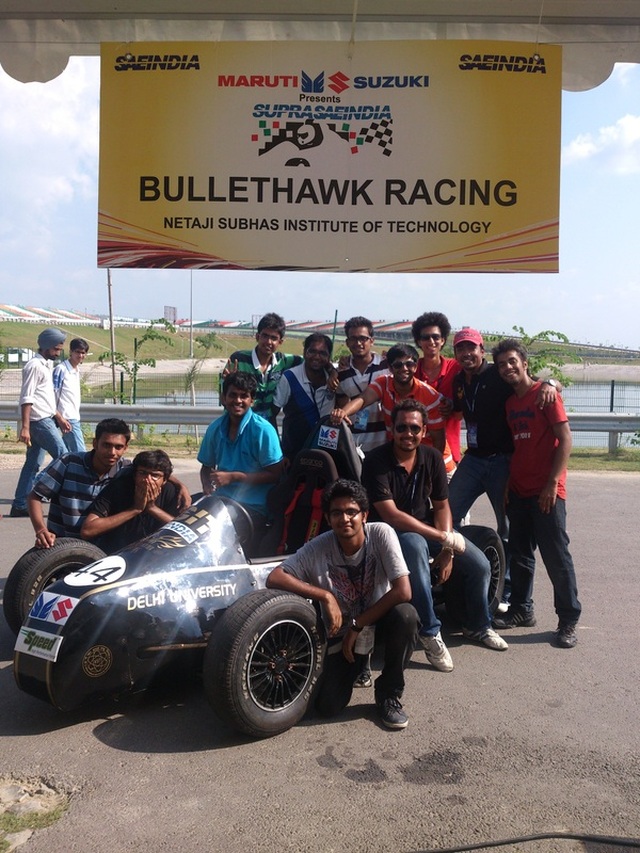 Team BHR at BIC, Greater Noida
In mid of a boring lecture...Suddenly you hear a beep sound, you realize it’s your Smartphone and you reach out for it with all enthusiasm…and Oops! It just slipped out of your tender hands leaving the screen all cracked. Naah…no need to cry over spilled milk. Samsung has got a magic wand for you. Samsung in Korean means “tristar” or “three stars”. The word “three” represents something “big, numerous and powerful”, the stars on the other hand mean eternity. Proving true to its meaning stands Samsung’s latest invention. This very technology could mark the end of cracked phone screens.
The company made its debut of flexible phone prototype recently at the International CES in Las Vegas. Made up of organic light emitting diodes famously known as the OLEd’s, this new phone by the technology gigantic is like a breath of fresh air which would swap plastic for glass in screen. The phone comes with a 5 inch, 16.9 resolution screen which is quite impressive. According to a Samsung spokesperson, the screens will be “ fold able, roll-able wearable and more. They will allow for a high degree of durability through their use of a plastic substrate that is thinner, lighter and more flexible than the conventional LCD technology.
Though the concept of creating flexible electronics sounds very amusing but it is not the first. This very idea has been touted since the 1960’s when the first flexible solar cell arrays appeared. Since then many companies have been working on the idea though now it seems that Samsung has surely walked away with the cake. The company though hasn’t yet announced the price of the “unbreakable” phone but according to the gadgets pundits it is going to cost a hefty amount keeping in mind its extraordinary features. The phone can be expected to hit the international markets somewhere in the first half of 2013but as far as the Indians are concerned they may have to wait a bit longer. Whatever the technology may be, it certainly seems that very soon our phones will not just be smart but bendy too. So, all those gadgets freaks out there…Get ready to attack!!!
Kirti Sharma
Columnist
The month of January saw a radical reinvention of a company with a long track record as Blackberry - formerly known as Research in Motion launched its new operating system Blackberry 10 and entered in direct competition with major players in the Smartphone industry. This platform represents a massive overhaul in design and in thinking at the company. BlackBerry clearly asked itself, what is most important to the masses? And what do they care about?
An interface that prioritizes messaging, contextualizes communication, and doesn’t slow users down with useless nonsense emerged as the answer.
On top of the rebranding of the company, executives took the stage to show off the new 4.2-inch BlackBerry Z10 and a second model launching equipped with a QWERTY keyboard. With the Z10, Blackberry has created a smartphone that’s worthy of being mentioned in the same space as the latest Android devices and the iPhone. The BB10 interface on the new Z10 is smooth and powered by gesture controls that are extremely user friendly. Blackberry Hub is yet another appealing feature which universalizes the messages and E-mails in one place while avoiding clustering at the same time. The Calendar is also contextually integrated as for each entry; it will bring up info on other participants (if there are any) as well as related emails.
Blackberry’s famous feature, the ‘Blackberry Messenger’ is also upgraded. For BB10, the company added two new features to this popular core service, namely video chat and screen sharing. Another much touted feature of BlackBerry 10 is Balance, as in work/life balance. This allows users to have a separate personal profile with different apps, messaging accounts as well as different backgrounds. One can easily fall in love with the BB10 interface if it were not for the small number of applications that are available for the new OS. It’s impressive to note that over 70,000 apps are already up and available but the number still remains extremely low as one compares it with Google Play Store and iOS App Store.
Blackberry Z10 is to be released in India at a price above Rs. 40000 (Source: IBN)
Videt Jaiswal
Columnist
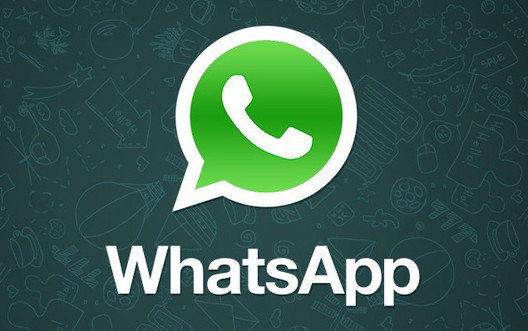 Courtesy - Google Images Financial Times, one of the world’s leading business news and information organisations, has perhaps perfectly surmised the service of WhatsApp in a single phrase – “WhatsApp has done to SMS on mobile phones what Skype did to international calling on landlines.”
But for those who still can’t draw on this analogy, WhatsApp Messenger is a cross-platform mobile messaging app that allows one to exchange messages, amongst other media, without having to pay the mobile carrier for the usual text messages. The mere fact that Whatsapp is a relatively recent start-up is a lot to take in, in itself, for its enormous presence in our daily lives has lead us to believe that it has always been present. For instance, did you know that the American giant, Google Inc., was first incorporated as a private company only in 1998? For most of us, it has always been there, has it not?
The point is that WhatsApp, from the time of its inception, has received a massive boom in its user reception worldwide and has become one of the world’s most widely used internet messaging services in most of the smartphones today. That being said, it’s not a matter of sheer luck that led WhatsApp to achieve its current position. Its interface across all operating systems, be it Apple’s iOS, Blackberry OS, Android, Symbian, or that of the new Windows Phone, is right next to seamless. Delving right into its commencement and history, WhatsApp was founded in 2009 under the same name by former veterans of Yahoo! Inc., Brian Acton and Jan Koum. From handling a total of 2 billion messages daily in April 2012, WhatsApp now handles an unthinkable number of 10 billion messages daily. That’s 10,000,000,000! WhatsApp is easy to use. All one needs to do is input the phone number and enter a verification code that one receives shortly after entering the number. It automatically synchronizes all the contacts who are already WhatsApp users.
No unnecessary advertisements, it’s simple. It’s neat.
An interesting observation is that WhatsApp doesn’t collect any user data as it challenges to have a different approach towards providing an effective internet messaging service.
“At WhatsApp, our engineers spend all their time fixing bugs, adding new features and ironing out all the little intricacies in our task of bringing rich, affordable, reliable messaging to every phone in the world. That’s our product and that’s our passion. Your data isn’t even in the picture. We are simply not interested in any of it.”
A company which works towards its product with such a genuine approach is bound to come up with something worth talking about. And when it comes to WhatsApp, the world is a witness to its success.
Yugal Raj Jain
Columnist
The Beginning…
Kevin Systrom had a marketing job at Nextstop. Even without prior knowledge or skill, he learnt how to program simple engineering ideas. One of his ideas led to combine the 'Check-in' ability of foursquare (which allows you to 'check-in' to a location on the map) with the elements of the popular game - Mafia Wars. He made a prototype and named it as 'Burbn'.
Luck was on his side when he met two prominent individuals from Baseline Ventures and Andreessen Horowitz who were immensely impressed with his ideas and decided to fund his venture with $500,000.
As Mike Krieger joined Kevin, Burbn was almost coded into a neat HTML5 mobile app which allowed users to check into locations, make plans (future check -ins), earn points for hanging out with friends, post pictures and much more. However, Burbn seemed too cluttered as an iPhone app, overrun with features.
This led to a shift in focus as Mike and Kevin identified mobile photos as a worthwhile opportunity. An app was built, right from scratch - basically cutting everything from Burbn except its photo posting ability, comments and like capabilities. What remained was Instagram - a photo sharing application and a social-network.
Current scenario
A 1 MB application that allows users to post photos and share with other users - Instagram has more than 100 million users and 1 billion photos on its database today. As homage to both the Kodak Instamatic and Polaroid cameras, Instagram confines photos in a shape of a square. Each second, a new user is added and on an average, 58 photos are uploaded. In its largest acquisition deal to date, Facebook Inc. purchased Instagram for $1 Billion in cash and stock but decided to keep it independently managed. Instagram is available as a free app in App Store and Google Play.
I remember the days when self-expression used to be challenging...
But then again, I have been brought up in a world where internet has always been a close friend. But this kind of nostalgia and reminiscing does lend a certain vintage feel to the piece, doesn’t it?
SlideShare, it probably seems like an obvious thing of existence today – what’s so special about it? Probably nothing. After all, it’s just a website that shares presentations – child’s play.
But the truth is actually far from it. In fact, the simple notion that people think it’s so obvious and simple makes its presence even more appealing. Drawing on a similar analogy, did you ever take a pause to contemplate what is so special about the telephone? Probably nothing, it’s always been there.
Except that there is something special about the telephone - it changed the world.
SlideShare aims to share a similar rationale; but apart from that, it’s a completely different being on its own. Let’s face it – being online today more or less refers to browsing only a particular set of websites over and over again. You know the ones that rhyme with "Blue Cube", "Space Hook", "Sticky Media" and “Quitter”. Now imagine, if you will, that you have a tool at your disposal that could actually educate you alongside providing such online entertainment. What you have in your mind now is about 1% of what SlideShare actually does - it’s much more than mere education along with entertainment.
Co-founded in 2006 by Rashmi Sinha, Jonathan Boutelle and Amit Ranjan, SlideShare is the world’s largest online community for sharing presentations. The idea came into existence when the trio realised that there was no decent way to share conference presentations online. So, it should not come across as a big surprise that it’s got fantastic numbers: over 50 million monthly visitors, over 130 million page views and a constant rank in the top 200 websites in the world.
At the heart of SlideShare is a vibrant professional and educational community whose presence on the website is always prominent in the form of comments, favourites and downloads. And its existence on the biggest network on earth – the internet ensures that its content spreads virally through organisations such as LinkedIn, Facebook and Twitter. With the help of SlideShare, people and organisations can upload documents, PDFs, videos, webinars, share ideas, conduct research, which helps them to connect with others, generate leads for their businesses and the list can go on and on. Its usage by the big guns like The Whitehouse, NASA, The United Nations, Hewlett Packard, IBM, The US Army and The US Navy gives us an insight on its efficiency and usefulness. Moreover, it provides us with the advantage of connecting with an enormous and instant audience. With SlideShare, everyone can become a master of showmanship and presentation.
SlideShare is known to recruit promising individuals for its offices, both in New Delhi and San Francisco. However, given that its current workforce itself is about 55 employees in total, sudden expansion of the company seems unlikely. Even after its acquisition by LinkedIn, future plans of the company are not especially known. But the future of SlideShare is, for lack of a better word, very bright. Thanks to services such as SlideShare, we all have a shot at being a celebrity of sorts. Commerce has become an art. Work is a stage.
Clearly, I need to raise my game and get back to work on my slides...
Zomato is one such startup of India which promises to draw a global picture. Seeing its steep growth in the last 6 months, it certainly deserves to be UE's Company of The Week.
Zomato.com started off as Foodiebay.com by Mr. Deepinder Goyal, an IIT Delhi Graduate and Mr. Pankaj Chaddah. It was in 2008 when they were working at Bain and Company when they decided to help their colleagues at Bain by scanning and uploading Food Menus online. What started on the office intranet with about 50 menus soon became popular as word got around. Goyal and Chaddah decided to make a business out of it and made the menus available on a public platform. From working at home to a 20,000 sqft. office in Delhi and branches in Mumbai, Bengaluru, Pune, Hyderabad, Chennai, Kolkata, Lucknow, Jaipur, Ahmedabad, Chandigarh, Indore, Ludhiana, UAE and Sri Lanka, from initially investing Rs.50 lacs from their own pocket to getting Rs. 13.5 cr investment from Info Edge India Ltd. , the journey of Zomato has been stupendous. What took them to reach there? When you have a good paying job in one of the world's biggest management consulting firm, a degree from one of the India's best technical colleges and still you decide to follow that one thing that you love - that courage took them up where they are now today. Although they do not plan to stop here - afterall, sky is the limit. Future plans include expanding to Australia, Turkey and Hong Kong and hiring top-notch talent. Zomato also launched a print version of the content on the website in collaboration with Citibank in May 2012. The guides are marketed and sold under the name "Citibank Zomato Restaurant Guide". As of now, Zomato has 50,700 restaurants in 17 cities in 3 countries. They have an iPhone App, Android App, Facebook App, Windows Phone App and Blackberry App. Zomato allows users to rate restaurants, write reviews, see menus, sort according to variety of fields and above all simplifies life for the consumer in market which is over-flooded with places to eat. Zomato also runs a unique photo blog known - www.zomato.xxx which it calls as 'Food Porn'. Indeed, the company promises a steep growth in future.
"Quora.com - It starts with a Q and ends with an A and seeing its recent outburst, it clearly deserves to be UE's Company Of The Week."Quora.com is a question and answer social networking website which allows users to ask as well as answer questions, upvote or downvote answers and interact with a highly intelligent and diverse audience in all fields. Quora was co-founded by two former Facebook employees, Adam D'Angelo and Charlie Cheever. One would now be led to wonder how Quora is any different from Yahoo! Answers or Answers.com. Here is a precise answer by a Quora user: "In my rough estimation, about 70 IQ points."Indeed, Quora's intelligent user base is its USP and puts it way ahead of its competition. Quora first launched in private beta on January 4, 2010. It was founded by two Ex-Facebook employees and raised $11 Million in March 2010 which valued the start-up at $86 million! What really inspired the co-founders to come up with Quora was the belief that the internet was short of a lot of useful information which is in people's mind, desperate to come out. In their own words: "The way we think about this is there’s actually a lot of information that’s still in people’s heads that’s not on the internet. And when you think about it you would say that probably 90% of the information that people have is still in their heads, not on the internet"It was only in June 2010 that Quora opened to the public. Since then, it has come a long way. As of June 2012, Quora has 1.5 million active users per month. The most addictive characteristic of Quora is that it makes one feel smart. To be a part of an intelligent discussion and sometimes being the expert in that field not only booms one's confidence but also aids in virally spreading the word about this social network to everyone else - as one would want one's friends to know about one's smartness. Here, talking what makes sense is fashion. Even the most simple questions would find a well researched answer. That is the beauty of Quora. Quora is certainly up up for a bright future. The Daily Telegraph has predicted that Quora will become larger than Twitter. Quora, along with Airbnb and Dropbox, has been named among the next generation of multi-billion dollar start-ups by the New York Times. Adam D'Angelo was ranked number 22 among the smartest people in the technology industry by CNN Money in 2010. Cheever and D'Angelo were both listed in the Inc. Top 30 Under-30 entrepreneurs list of 2011.
|
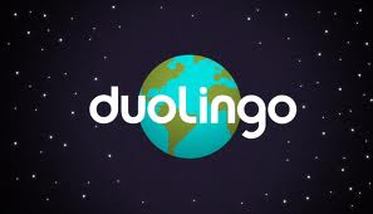
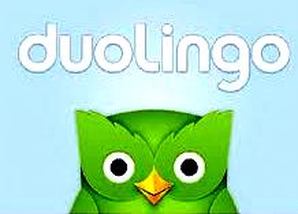


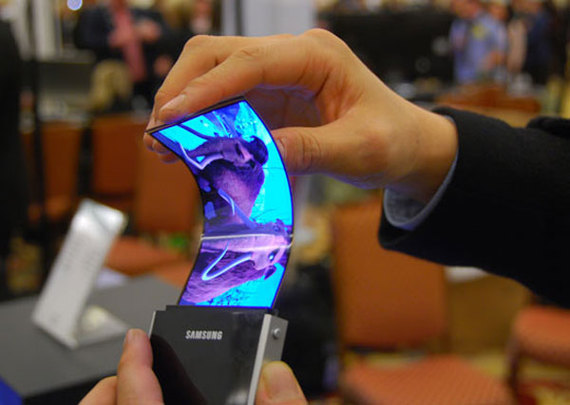
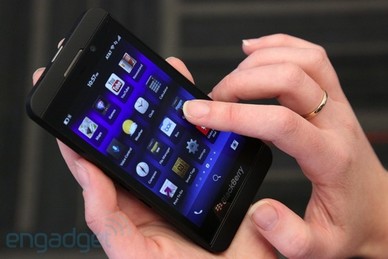




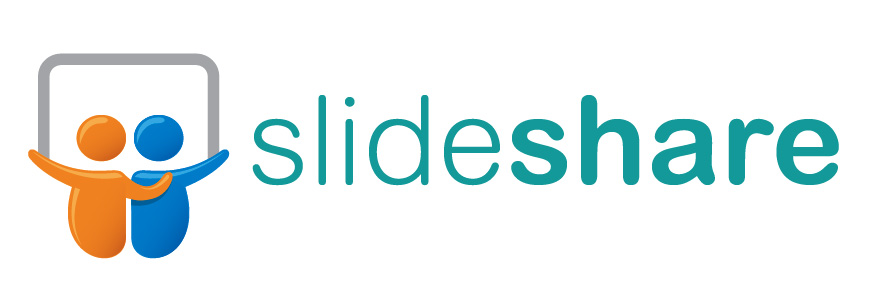

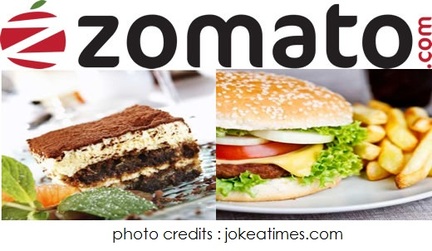

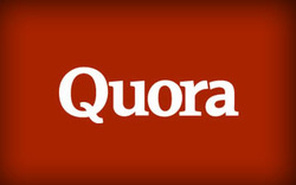
 RSS Feed
RSS Feed